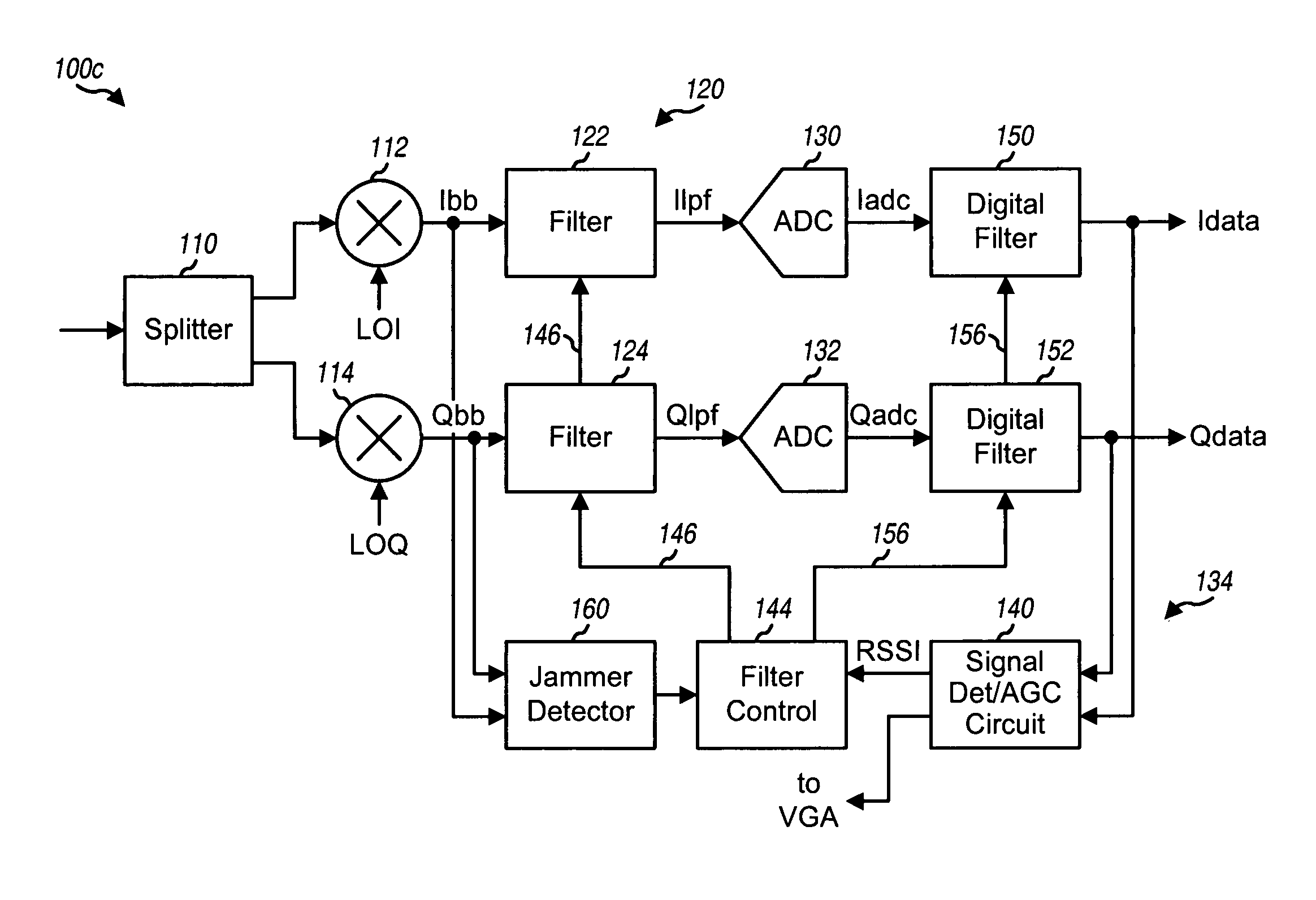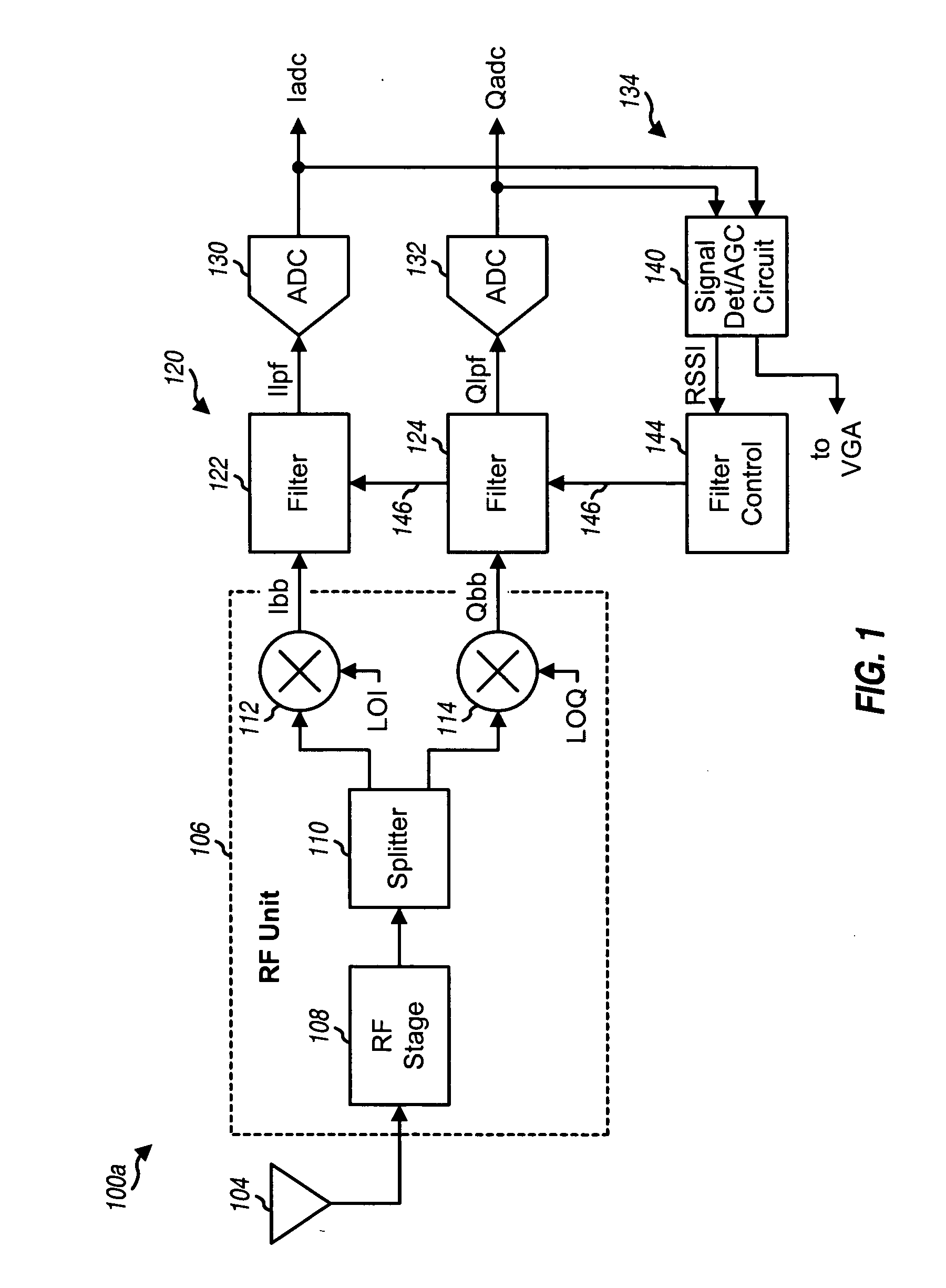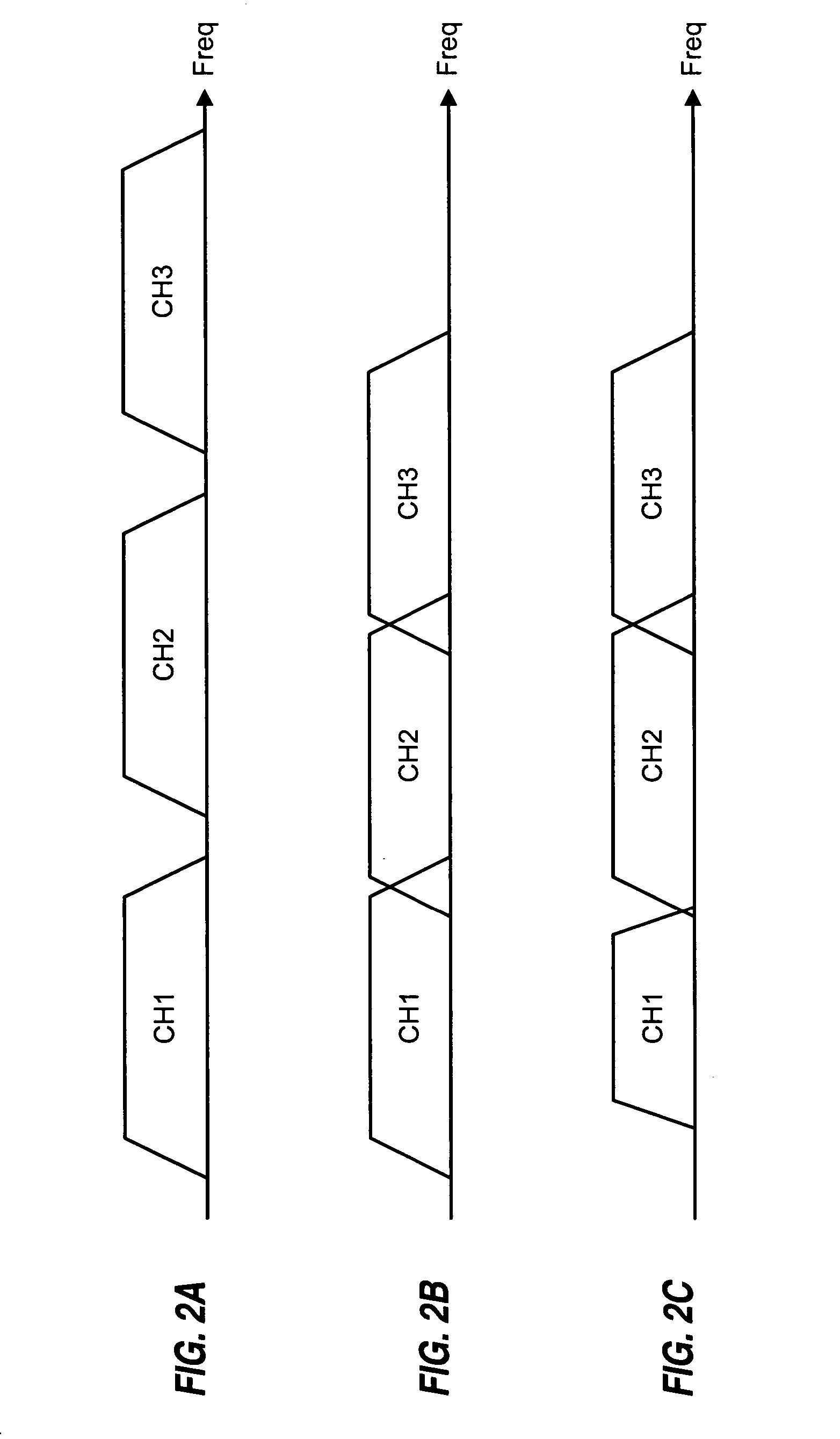Noise reduction filtering in a wireless communication system
a wireless communication system and noise reduction technology, applied in the field of wireless communication, can solve the problems of interference between btss, wireless communication systems do not have an adequate guard band or no guard band at all, and the number of wireless communication systems has increased in complexity, so as to avoid performance degradation
- Summary
- Abstract
- Description
- Claims
- Application Information
AI Technical Summary
Benefits of technology
Problems solved by technology
Method used
Image
Examples
Embodiment Construction
[0021] The present invention is directed to techniques for filtering baseband signals and improving the reliability of wireless communications. In an embodiment, the signal strength of a received signal is measured. When the received signal is at a low signal level, the bandwidth of a filter may be reduced. The reduction in the bandwidth reduces the noise bandwidth and increases the rejection of adjacent channels. Conversely, when the received signal strength is at a high signal level, the bandwidth of the filter may be widened to take advantage of the greater signal strength.
[0022] A wireless communication device has a radio frequency (RF) unit that conditions (e.g., filters, low noise amplifies, frequency downconverts, and so on) the received signal at a selected RF channel. The portion of the spectrum available for wireless communication may be apportioned into a plurality of RF channels, each having a bandwidth designated by industry standard.
[0023] The wireless communication ...
PUM
 Login to View More
Login to View More Abstract
Description
Claims
Application Information
 Login to View More
Login to View More - R&D
- Intellectual Property
- Life Sciences
- Materials
- Tech Scout
- Unparalleled Data Quality
- Higher Quality Content
- 60% Fewer Hallucinations
Browse by: Latest US Patents, China's latest patents, Technical Efficacy Thesaurus, Application Domain, Technology Topic, Popular Technical Reports.
© 2025 PatSnap. All rights reserved.Legal|Privacy policy|Modern Slavery Act Transparency Statement|Sitemap|About US| Contact US: help@patsnap.com



